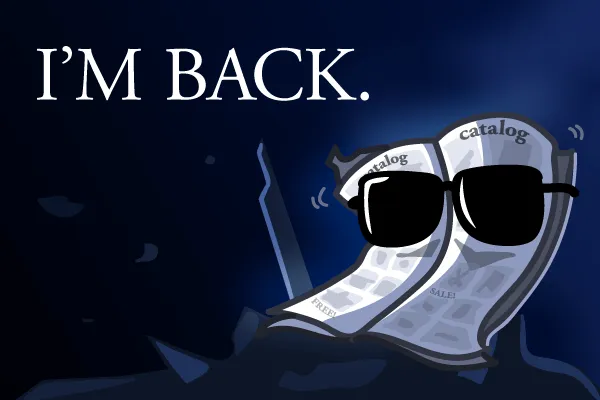
Recently Adweek and The Wall Street Journal talked about the curious persistence of the print medium, despite the rapid expansion of online retail. Retailers like Bonobos that already have a large and sophisticated online presence continue to mail out catalogs.
The print catalog has not only survived, but is experiencing a revival. Retailers that started online are actually 'going retro' and have begun printing their catalogs, or at least trying to launch offline campaigns.
It used to be that catalogs were printed and mailed because they were customers' main source of information about, say, Ikea's newest line of products. So they existed out of necessity.
Now we don't need print catalogs for that. All the information we need about the products we're interested in is online, since most stores also have a website, and many even operate exclusively online.
We probably expected that, with the ecommerce boom, traditional marketing mediums like print catalogs would become obsolete and phase out.
The Tactile Experience. I'd love to talk about the smell, feel, and look of shiny catalog paper:

But at the risk of sounding completely self-indulgent, I'd invite you instead to consider whether you'd rather receive a birthday card in the mail, or a birthday e-card in your inbox.
Or, why, despite the convenience and cost-savings of ebooks and ebook readers, are printed books here to stay? In this Mashable article "Why Printed Books Will Never Die", Catone compared the future of printed books to vinyl - for the sort of book lover who would buy a hardcover if she liked the Kindle version enough.
Printed things move from being data on paper, to paper forms of data - the focus being the preciousness of physical artefacts. We demand (and have a keener eye for) high-quality prints with good design.
Elegant print catalogs are hence pretty much standard now. Brands like Ikea (which, by the way, prints an astounding 211 million copies of its catalog a year) have even added to the tactile experience by making Augmented Reality catalogs. And its AR catalogs don't disappoint - readers armed with smartphones can peek inside the closet on the page, which is both cute and clever.

What the print catalog revival shows us is that old tools don't die, they evolve. The best marketing strategies don't throw them out, but use them in ways they cannot with new tools.
More importantly, the best marketing strategies are unified, and use the traditional print medium to direct traffic to their online platform seamlessly.
Bonobos is a great example of channel integration within a comprehensive marketing strategy. Its catalog focuses on bringing great photos and pretty design to its readers, as a print catalog does best - and directs readers to its website to find out more about its clothing.
Its website, in turn, encourages visitors to book a guided tour at its brick-and-mortar store. Bonobos emulsifies the convenience of the online platform, with the intimacy of the page and its people.
As tempting as it is to oversimplify, commerce doesn't simply move in a linear progression from brick-and-mortar, to print, to online retail, just as transportation didn't move linearly from foot, to horse, to automobile, to plane. We acquired new tools, but to expand the toolbox - keeping a special and important place for existing tools.
Successful marketing strategies are also experimental. Ikea is not the only brand dabbling in traditional/digital fusion. Warby Parker eyewear made a bold move in a yellow school bus, literally going on road trips to its followers, and having them read classic literature with its range of eyewear. You could also follow the Class Trip on #WPClassTrip. The campaign was spectacular, and its experimentation is hard to top.

Even if they tend to have an inexplicable fondness for yellow buses, old books, and handwritten birthday cards. :-)
Hey! Before you shoot off, check out our awesome post on remarketing vs. retargeting for eCommerce sales.
Melissa Tsang is a writer and speaker on the social impact of ecommerce and technology. She's also a bit of an impulse shopper. (A bit.)
Grow your sales at a ridiculously
lower CAC.